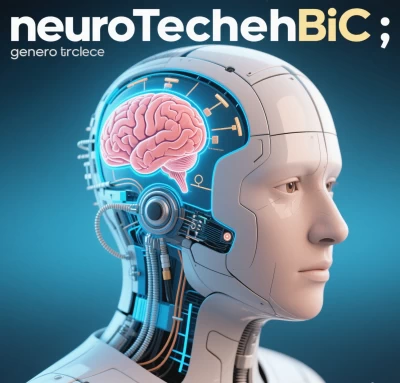
Terminology and Definitions
- Neurotechnology:
Defined by ISO/IEC JTC 1/SC 43 as “a collection of technologies and tools designed to access, monitor, study, evaluate, manipulate, or simulate the structure and function of animal and human nervous systems.” Key branches include:- Neural Signal Detection: Techniques like EEG (electroencephalography) and fMRI (functional magnetic resonance imaging).
- Neuromodulation: Methods such as deep brain stimulation (DBS) and transcranial magnetic stimulation (TMS).
- Neuroprosthetics and Enhancement: Devices like cochlear implants and retinal prosthetics.
- Brain-Computer Interface (BCI):
Defined by the China Artificial Intelligence Industry Alliance as “a system that acquires signals from the central nervous system, translates them into artificial output commands, and enables direct communication between the brain and external devices.” Key features include:- Independence from Peripheral Nerves and Muscles: Direct control via neural signals (e.g., paralyzed patients operating robotic arms with their thoughts).
- Bidirectional Interaction: Converts brain signals into control commands while providing sensory feedback (e.g., simulated touch).
NeurotechBCI’s Essence: Integrating neurotechnology’s foundational tools (e.g., signal acquisition, decoding algorithms) with BCI’s system architecture to create more efficient and intelligent human-machine interaction paradigms.
Technical Principles and Core Components
A NeurotechBCI system typically comprises the following modules:
| Module | Function | Examples |
|---|---|---|
| Neural Signal Acquisition | Captures electrophysiological, hemodynamic, or chemical brain signals | EEG (non-invasive), ECoG (semi-invasive), Utah Array (invasive) |
| Signal Preprocessing & Feature Extraction | Enhances signal quality and extracts intent-related features (e.g., P300 waves, motor imagery rhythms) | Wavelet transforms, ICA (Independent Component Analysis), CNNs (Convolutional Neural Networks) |
| Intent Decoding & Command Generation | Maps neural features to control commands (e.g., cursor movement, robotic arm control) | SVM (Support Vector Machines), LSTM (Long Short-Term Memory), adaptive filters |
| Feedback & Closed-Loop Optimization | Provides sensory feedback (e.g., visual, tactile) to optimize system performance | VR interfaces, tactile stimulators, neuroplasticity training protocols |
| External Device Control | Executes commands to influence the physical world | Wheelchairs, smart home systems, drones, neuroprosthetics (e.g., Össur’s mind-controlled bionic legs) |
Key Technological Breakthroughs
- High Spatiotemporal Resolution Signal Acquisition:
- Flexible Electrodes: Neuropixels probes enable single-neuron recording.
- Optogenetics Integration: Combines optical stimulation and electrical recording for closed-loop “read-manipulate” systems.
- Adaptive Decoding Algorithms:
- Transfer Learning: Generalizes models across users to reduce calibration time.
- Online Learning: Adapts to neural signal drift in real time (e.g., EEG changes due to fatigue).
Applications and Case Studies
NeurotechBCI is revolutionizing fields such as healthcare, industry, and entertainment:
1. Medical Rehabilitation
- Motor Function Restoration:
- Paralyzed patients control exoskeletons via motor cortex signals.
- ALS patients communicate using P300 potentials (e.g., MindAffect’s BCI typing system).
- Neurological Disease Treatment:
- Real-time EEG monitoring intervenes in epileptic seizures with electrical stimulation.
- Closed-loop DBS combined with fMRI feedback regulates limbic system activity in depression.
2. Industry and Human-Machine Collaboration
- Hazardous Environment Control: Miners remotely operate robotic arms via BCI to avoid exposure to risks.
- Operational Efficiency: Pilots use neurofeedback to optimize attention and reduce errors.
3. Consumer Entertainment
- VR Interaction: Meta’s haptic gloves combined with BCI enable “virtual object grasping” in the metaverse.
- Neurogaming: Valve’s Neurable uses EEG for “mind-controlled character movement.”
4. Military and Aerospace
- Unmanned Vehicle Control: DARPA’s Next-Gen Nonsurgical Neurotech develops non-invasive BCI for soldiers to control drone swarms.
- Astronaut Cognitive Enhancement: NASA tests BCI for decision-making and stress management during long-term space missions.
Technical Challenges and Ethical Concerns
1. Technical Limitations
- Signal Quality and Bandwidth:
- EEG’s low signal-to-noise ratio (SNR) limits fine intent decoding (e.g., individual finger movements).
- Invasive electrodes face biocompatibility and long-term stability issues.
- Algorithm Generalization: Cross-user accuracy drops due to individual variability.
2. Ethical and Safety Risks
- Privacy Breaches: Neural data may leak sensitive thoughts or emotional states.
- Cognitive Manipulation: Neuromodulation could enable coercive behavior modification (e.g., military applications).
- Social Inequality: High costs (e.g., invasive BCI surgery exceeding $100k) exacerbate healthcare disparities.
3. Regulatory Gaps
- Ambiguous Classification: Existing medical device standards (e.g., YY 9706.278) do not address BCI’s enhancement capabilities.
- Global Coordination: Disputes over “neural data sovereignty” (e.g., GDPR applicability).
Future Directions
- Multimodal Neurotech Integration:
- Optical-Electrical-Chemical Hybrid Sensing: Combines fMRI, EEG, and microdialysis for higher decoding accuracy.
- Brain-Cloud Interface (BCI 2.0):
- Real-Time Neural Cloud Uploading: Ultra-low-latency interaction via 6G networks, enabling global-scale brain connectivity.
- Neuroenhancement and Transhumanism:
- Memory Storage/Transplantation: DARPA’s RAM Replay explores hippocampal signal encoding for long-term memory.
- Sensory Expansion: Magnetic implants mimic avian navigation by sensing Earth’s magnetic field.
Conclusion
NeurotechBCI represents the frontier of neuroscience and engineering, aiming to transcend biological limitations in perception and action. Despite challenges in signal decoding and ethical governance, its potential in medical rehabilitation, human-machine collaboration, and cognitive enhancement has captured global attention. With advancements in flexible electronics, quantum computing, and neural decoding algorithms, NeurotechBCI may emerge as the next universal technology, reshaping civilization as profoundly as the internet.
If you are interested in purchasing this domain, please contact us via email: chuanchuan810@gmail.com





“Neurotech BCI” 是神经科技与脑机接口技术的结合术语,其核心含义可从以下维度解析:
1. 术语构成解析
Neurotech(神经科技):指应用工程技术研究或干预神经系统的跨学科领域,涵盖脑科学、生物电子学等。
BCI(Brain-Computer Interface):通过直接连接大脑与外部设备实现信息交互的技术,分为侵入式与非侵入式两类。
组合后指基于神经科技的脑机接口解决方案,强调通过工程手段增强或修复神经功能。
2. 技术特点与应用
医疗康复:帮助瘫痪患者控制机械臂完成进食等动作6,或治疗神经系统疾病(如ALS、中风)。
功能增强:探索意念控制设备(如智能家居)或认知能力提升。
研究挑战:需解决信号长期稳定性、生物相容性及用户培训复杂度等问题。
3. 典型场景
临床植入:如Neuralink的芯片植入技术。
非侵入式交互:通过脑电帽实现基础意念控制。
该术语通常指向企业或研究机构开发的综合性神经技术产品。